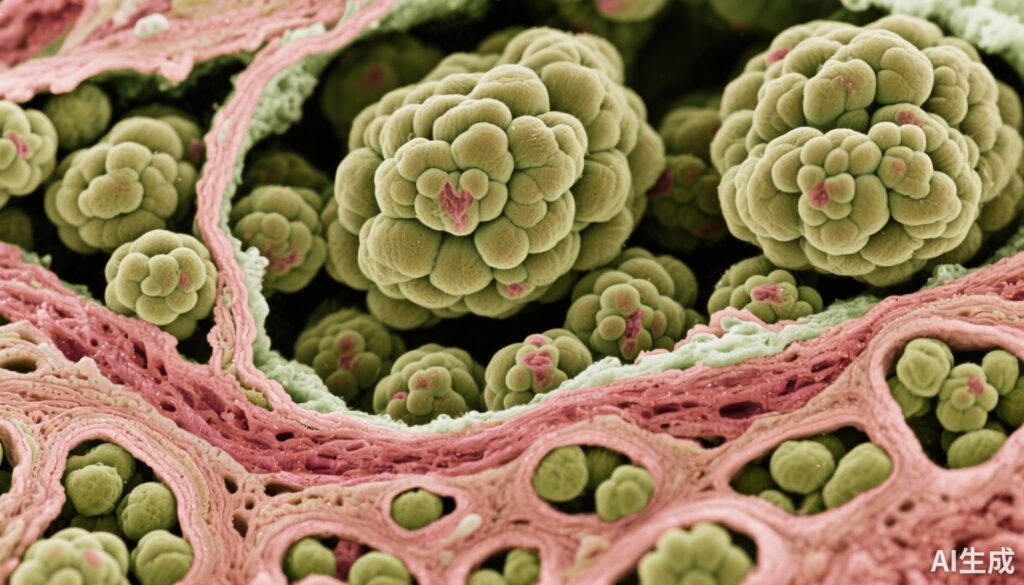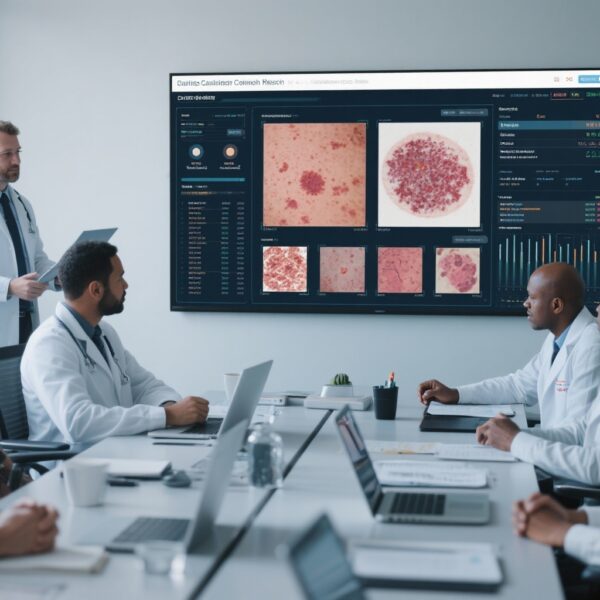Highlight
Large-cell transformation of mycosis fungoides (LCTMF) is a rare, histologically distinct phenomenon associated with an aggressive clinical course and poor overall survival. Patterns of care vary widely, with localized radiotherapy and multiagent chemotherapy as common first-line treatments. Prognosis differs significantly by extent of disease at transformation, with unifocal cutaneous involvement correlating with better outcomes compared to multifocal or extracutaneous disease. Current staging systems do not consider LCTMF as an independent entity, despite its markedly different prognosis compared to non-transformed mycosis fungoides and Sézary syndrome (MF/SS).
Study Background
Mycosis fungoides (MF) represents the most common form of cutaneous T-cell lymphoma characterized by an indolent course. However, a subset of patients develops large-cell transformation (LCT), recognized histologically by the emergence of large atypical lymphoid cells. This transformation signals a shift toward a more aggressive clinical phenotype. Despite this, LCTMF is currently not recognized as a distinct entity in established classification and staging systems for MF or Sézary syndrome (SS), limiting standardized approaches to prognosis and management. Given the rarity of LCTMF, contemporary data on treatment patterns and outcomes are sparse, leaving clinical decision-making guided by limited evidence.
Study Design
This retrospective cohort study analyzed 83 patients diagnosed with clinicopathologic LCTMF between January 1990 and October 2021 at the Peter MacCallum Cancer Centre, an Australian comprehensive cancer institution specializing in cutaneous lymphomas. Inclusion criteria required definitive histologic confirmation of large-cell transformation in patients with MF. The study collected detailed clinical and pathological data, including MF stage at transformation, extent of cutaneous versus extracutaneous involvement, treatment modalities employed, and longitudinal survival outcomes over a median follow-up of 8.0 years. The primary endpoint was overall survival (OS) from the time of LCTMF diagnosis, with subgroup analyses stratified by disease extent and prognostic factors such as age.
Key Findings
Among the 83 patients with LCTMF, 36% had early-stage MF (defined as stages IA to IIA) at the time of transformation. A majority (76%) presented with cutaneous-only disease without extracutaneous dissemination. First-line treatments were predominantly localized radiotherapy (48%) targeting limited lesions, followed by multiagent chemotherapy regimens (23%) for more extensive or systemic disease.
Median overall survival following LCTMF diagnosis was 3.5 years (95% confidence interval [CI], 2.2–8.2 years), indicating a substantially poorer prognosis compared to non-transformed MF/SS cohorts reported in the literature. The study identified three distinct prognostic categories based on disease patterns at transformation: (1) unifocal cutaneous LCTMF with a median OS of 4.6 years; (2) multifocal cutaneous LCTMF with a median OS of 2.5 years; and (3) extracutaneous LCTMF where median OS was only 1.1 years. These differences were statistically significant (p = 0.005), underscoring the importance of disease extent as a prognostic indicator.
Additional adverse prognostic factors included advanced patient age at transformation. The presence of extracutaneous disease was the strongest predictor of poor outcomes. Despite a one-third proportion of patients being early-stage at transformation, survival remained suboptimal, emphasizing the aggressive nature of LCTMF.
Expert Commentary
Large-cell transformation in MF represents a biologically and clinically distinct phase that demands careful attention. The findings from this extensive single-center cohort study reinforce prior smaller series by highlighting heterogeneous survival outcomes based on disease distribution. The relatively better prognosis of unifocal cutaneous LCTMF suggests that localized disease control with radiation may be an effective strategy in selected patients, while multifocal or extracutaneous involvement may require more aggressive systemic treatment.
One limitation noted is the retrospective design spanning three decades, which may encompass evolving diagnostic criteria, staging methods, and therapeutic approaches. Nevertheless, the prolonged follow-up and detailed clinicopathologic correlation provide valuable real-world insights. Prospective, multicenter registries and trials may be warranted to refine risk stratification and optimize therapies.
Mechanistically, LCTMF emerges through clonal evolution of malignant T-cells to large anaplastic variants. This biological shift likely underpins the aggressive clinical course. Incorporating LCTMF as an independent stage or risk category in MF/SS classification systems could improve prognostic accuracy and guide tailored interventions.
Conclusion
This study elucidates the clinical heterogeneity and poor prognosis of large-cell transformation in mycosis fungoides. It highlights significant prognostic subgroups defined by focal or widespread cutaneous and extracutaneous involvement and draws attention to current discrepancies in staging systems that do not recognize LCTMF independently. Given the markedly reduced survival and treatment variation observed, incorporation of LCTMF status into MF/SS staging frameworks is strongly justified. Future research should focus on prospective validation of prognostic models, optimization of therapeutic algorithms, and exploration of targeted biologic treatments to improve outcomes for this high-risk patient population.
Funding and Clinicaltrials.gov
The study by Johnstone et al. was conducted at the Peter MacCallum Cancer Centre without reporting specific external funding sources. It is not registered as a clinical trial but represents an observational cohort study.
References
Johnstone P, Higgins M, Prince HM, Lade S, McCormack C, van der Weyden C, Bhabha F, Buelens O, Blombery P, Campbell BA. Large-cell transformation of mycosis fungoides: Patterns of care and patient outcomes. Br J Haematol. 2025 Sep;207(3):824-833. doi: 10.1111/bjh.20225. Epub 2025 Jun 25. PMID: 40557623; PMCID: PMC12436213.


